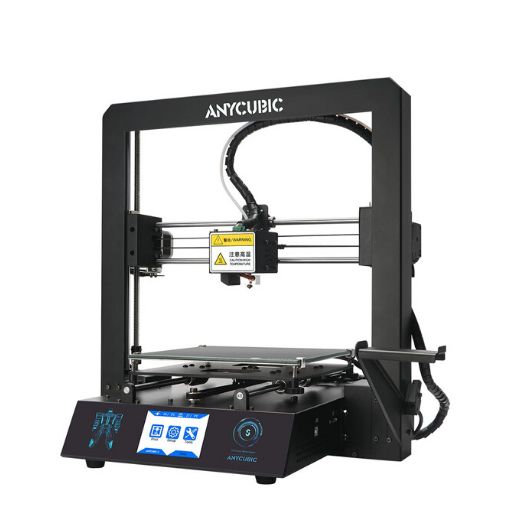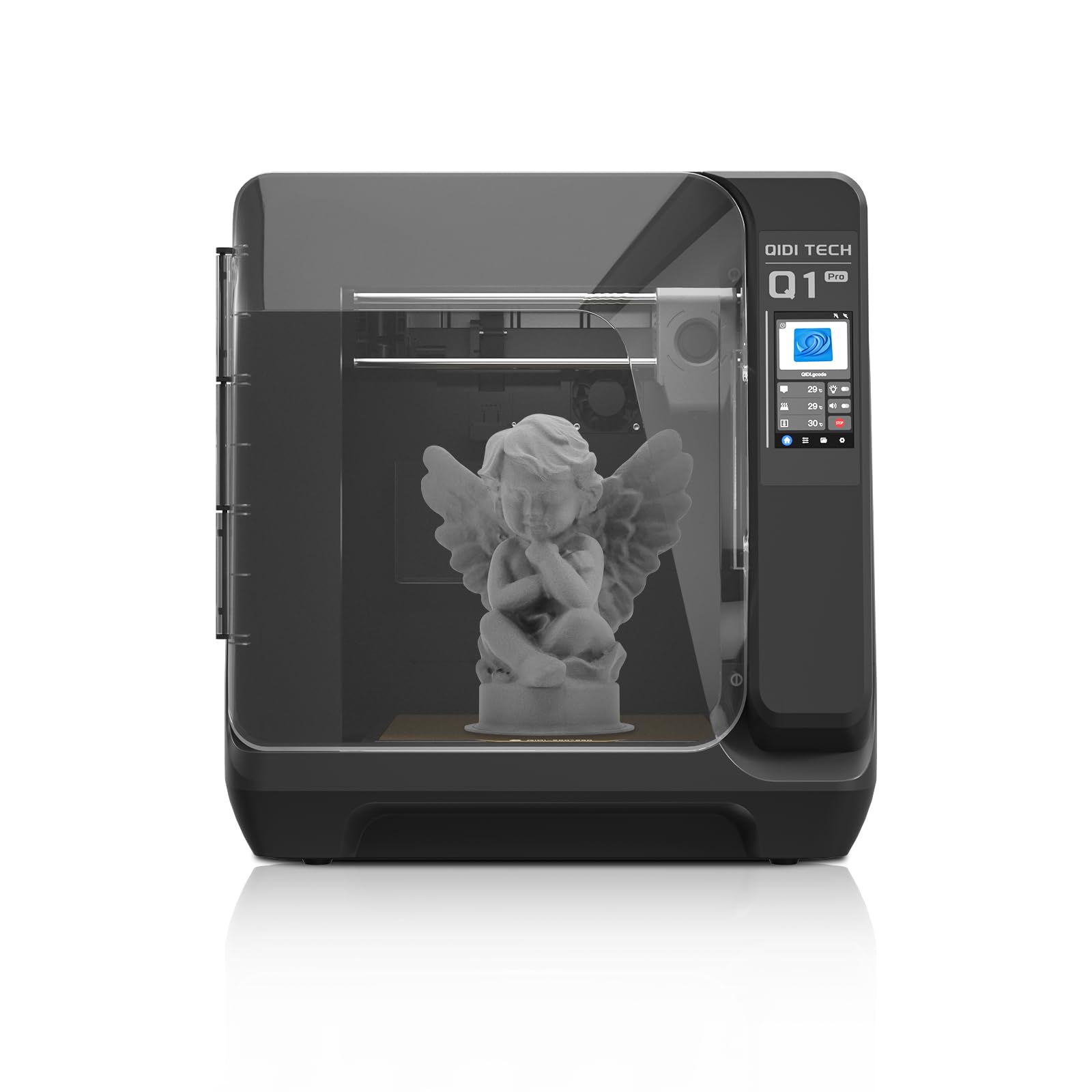Compare Mega S vs Q1 PRO
Comparison between the best 3D printers
Choose the best 3D printer at the best price. The cheapest 3D printers are here.
Buy a 3D printer here with 3D Fila.
 |
 |
|
| Model | Mega S |
Q1 PRO[BUY Q1 PRO] |
| Printing Material | Filament | Filament |
| Buy Filament for Anycubic Mega S | Buy Filament forQIDI Q1 PRO | |
| Estimated price | $149,00 | $449,00 |
| Manufacturer | Anycubic | QIDI |
| Release Year | 2019 | 2024 |
| Print Volume [mm] | 210x210x205 | 245x245x245 |
| Printer Size [mm] | 405x410x452 | 467x477x489 |
| Weight [kg] | 14,5 | 20 |
| Power Loss Recovery | YES | YES |
| Enclosed printer | NO | YES |
| Bed Leveling | Manual | Automatic |
| Filament End Sensor | YES | YES |
| Bed type | Heated | Heated |
| Power supply system | Bowden | Direct Drive |
| Standard nozzle | 0,4 | 0,4 |
| Maximum Nozzle Temperature [°C] | 260 | 350 |
| Maximum Bed Temperature [°C] | 110 | 120 |
| Maximum printing speed [mm/s] | 100 | 600 |
| Filament holder | YES | YES |
| Camera for supervision | NO | NO |
| Recommended filaments | PLA, TPU, ABS, PETG | PLA、ABS、ASA、PETG、TPU、PC、PA、PA-CF、PET-CF、PAHT-CF etc. |
| Recommended slicers | Cura, Simplify, Slic3r | QIDI Slicer/Cura/Simplify 3D/ORCA/PRUSA Slicer |
| Maximum Resolution [mm] | 0,1 | 0,1 |
| Processor | 8 bits | Cortex-A53,64-bit Processor |
| Display | Touchscreen TFT 2,8'' | Touchscreen 4,3'' |
| Power Supply | 12V / 300W | 350 W |
| Connectivity | SD / USB | WiFi/USB Flash Drive/Ethernet Cable |
| Operating systems | Windows, Mac, Linux | Windows, Linux, Macbook |
| Date of registration in the system | 2021-04-15 | 2024-07-09 |
| Release date | 2019 | 2024 |
| Extra features | The Anycubic Mega S offers a printing platform with excellent adhesion, easy removal after cooling. It has a filament sensor for a better experience with flexible materials and a multilingual and intuitive color touchscreen. Assembly is quick, requiring only 8 screws and 3 connections. It has a large build volume (210 x 210 x 205 mm), high positioning accuracy and supports a variety of materials, including TPU, PLA, ABS and wood. It stands out for its solid metal structure, superior stability, high-quality printing with layer resolution of up to 50 microns, Ultrabase for easy adhesion and removal of parts, resumption of printing after power outage, high-quality extruder for flexible filaments, suspended filament support and stable structure that reduces shaking, improving printing quality. | The QIDI Q1 Pro 3D printer stands out for its Core XY structure and heating chambers that reach up to 60ºC, ideal for advanced materials such as ABS and Nylon. It features Klipper firmware, an automatic leveling system, a high-flow extruder with a double metal nozzle and a hotend that reaches 350ºC. It offers connectivity via Wi-Fi, USB and Ethernet, as well as a 1080p camera for remote monitoring and an intuitive touchscreen for easy operation. |
| Support for multiple colors and materials (AMS and CFS) | NO | NO |
Notes * |
||
| Cost-benefit | 7 / 10 | 8 / 10 |
| Hardware | 2 / 10 | 4.8 / 10 |
| Tela | . | . |
| Print volume | 3 / 10 | 3 / 10 |
| Performance | 1 / 10 | 5 / 10 |
| [BUY Q1 PRO] |
Conclusion |
| In comparing the Anycubic Mega S and the QIDI Q1 Pro, several factors emerge that influence the decision for potential buyers. The Anycubic Mega S stands out as a highly cost-effective option, offering essential features suitable for beginners and casual users. Its solid construction, decent print volume, and support for a variety of filament types like PLA, TPU, and ABS make it a versatile choice. Additionally, its manual bed leveling and direct support for basic connectivity options (SD and USB) cater well to users looking for a straightforward 3D printing experience without complicating technology. However, it falls short on advanced functionalities, print speed, and the overall print quality that emerges from its 8-bit processor and the lack of an enclosed build environment. Conversely, the QIDI Q1 Pro presents itself as a significantly more advanced and feature-rich machine. With a higher price point, it justifies its cost through superior technologies like automatic bed leveling, a Core XY structure, and impressive connectivity options, including Wi-Fi and Ethernet. Its capability to achieve higher nozzle and bed temperatures makes it suitable for a wider range of materials, including advanced filaments like Nylon and carbon-infused composites. Furthermore, the presence of Klipper firmware enhances performance, while the added features like remote monitoring via a camera elevate the overall printing experience. In conclusion, if budget constraints are a primary concern and the user is primarily engaged in casual or hobbyist 3D printing, the Anycubic Mega S provides considerable value. However, for those willing to invest more for advanced capabilities, higher printing speeds, and improved quality, the QIDI Q1 Pro is the clear winner for serious enthusiasts and professionals seeking robust performance and flexibility. Your choice ultimately hinges on your specific printing needs, experience level, and financial considerations. |

